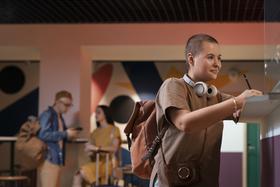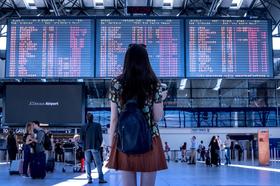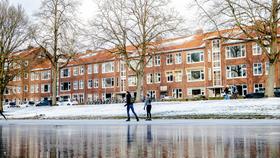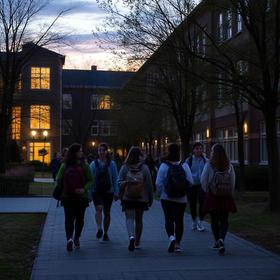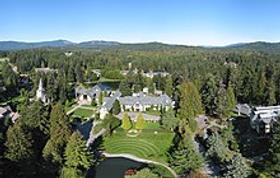By now, two decades into the 21st century, it is obvious even to the most jaded, cynical people out there that we must rethink how we live and function on this planet, which we call Earth. We are discovering that Earth's resources are finite. We are finally realizing that we must conserve energy. We are rethinking the cost of goods and services regarding their carbon footprint. Sustainability is no longer a theory. It is a concept that is being put into daily practice.
That's why it is very encouraging to see so many private schools making progress towards developing sustainable schools. For schools, sustainability involves the wise use of energy and foodstuffs, the prudent management of a school's fiscal resources, and more. The National Association of Independent Schools published an excellent white paper, Sustainability: Creating 21st Century Sustainable Schools. Let's look at the five areas of sustainability that this document puts forth. The NAIS calls these 'dimensions,' which is an apt description. 'Area' implies a confined space. 'Dimension' speaks to the challenge's vastness and the solution's scope.
Financial Sustainability
Financial sustainability is all about drawing a line and setting responsible limits. It doesn't matter whether you have $100,000 in the bank or $900 million in your savings account. Schools need to use all the expertise and tools available to them to control expenses and maximize the use of every dollar of income. This is no easy task, but one that can be accomplished with creativity and thoughtfulness. This dimension, unfortunately, is not as easy to explain or 'sell' to students as it is to the adult members of the school community and its alumni. My mother used to say that money doesn't grow on trees. Perhaps that's overly simplistic, but good stewardship of a school's financial resources ensures that the school and its good works will be there for generations. Teaching students to be frugal and not spend money simply because they have it is a harsh lesson. It is an even tougher lesson to teach when we adults provide examples of spending which contradict what we are telling our young people to do.
Environmental Sustainability
Even a small school generates enormous amounts of waste. Teaching everybody to recycle is a big step towards controlling that waste output. Encouraging consistent compliance with recycling is another important step. Try doing it in stages. For example, using coffee mugs or water bottles instead of styrofoam cups and water in plastic bottles can become a habit. You can reinforce the damage that styrofoam cups and plastic water bottles do to your local environment by having your students do a trash pickup a mile or so roadside near your school. They will be amazed at the stuff people throw out their car windows. Drastically reducing the amount of material that has to be recycled or hauled off-campus is the real challenge. That's why it's encouraging to see schools composting and using gray water for crop irrigation, among other initiatives. Turning off lights and lowering thermostats whenever or wherever possible is another habit that all school community members can learn.
This video describes how Siemens works with The Willow School.
Teaching students to respect nature and to live in harmony with nature is all part of a proactive environmental sustainability initiative. Unlike financial sustainability, which is tougher for most young people to understand, most students find nature fascinating. They will instinctively cringe at the thought of destroying nature's myriad creations. We develop responsible, environmentally sensitive adults by showing young people how to care for and protect the environment.
Teaching students to respect nature and to live in harmony with nature is all part of a proactive environmental sustainability initiative. Unlike financial sustainability, which is tougher for most young people to understand, most students find nature fascinating. They will instinctively cringe at the thought of destroying nature's myriad creations. We develop responsible, environmentally sensitive adults by showing young people how to care for and protect the environment.
Global Sustainability
One of the realities of 21st-century living is that we are all connected. Globalism is here to stay. Whether in Hong Kong or Hollywood, we have the electronic means to exchange ideas and promote understanding. Just as humankind has many faces, colors, customs, and cultures, it also shares many common aspirations. Whether you live in Bryn Mawr or Beirut, you want your children to receive the best education that you can afford. You want to equip them with the skills needed to be constructive members of society. Once we truly understand that, despite superficial differences, we want most of the same things for ourselves and our families, global understanding becomes a reality. Through networking and dialogue, we can achieve a modicum of global sustainability. Understanding and tolerance are critical by-products of this dimensional exercise.
This video describes a trip students from The Lawrenceville School took to Bolivia.
Programmatic Sustainability
One only has to look at how private schools have changed over the last 40 or 50 years to understand how this dimension works. The core subjects remain constant while the approaches to teaching them have changed markedly. Technology was not on anybody's radar back in the 60s. It sure is now. Now it is more important than ever to develop leadership skills in our young people. They must learn to take charge and lead their generation to places earlier generations could only dream about. Critical thinking skills have never been more important. You cannot develop those skills and attributes by having children parrot back facts and figures. Delving into those facts and figures and understanding the theories behind them are major challenges of programmatic sustainability.
Demographic Sustainability
In the 1950s and 1960s, private school populations were fairly homogenous and well-off economically. Students of color and students from non-Christian backgrounds were relatively rare. If you attended on scholarship, you were a faculty brat. That has all changed in most private schools. Diversity is the watchword in the 21st century. Schools proactively reach out to families who cannot afford to send their academically capable children to private schools. Generous benefactors are giving millions to their beloved alma maters to ensure the requisite scholarship funds are available for these children's educations. The ivory tower mentality has disappeared. Schools value the richness that diversity gives their communities.
In this video, Rick Newberry discusses marketing your school in troubled times.
The subsets of these NAIS sustainability dimensions could fill a book. Hopefully, this little essay will encourage you to champion sustainability in your home and school. Our future depends on it, doesn't it?
Questions? Contact us on Facebook. @boardingschoolreview
#SustainableSchools #GreenEducation #FutureReady #EnvironmentalSustainability #EducationReform


